Ertach Kernow - The historic parish of Breage
The historic parish of Breage was known as St Breock in Kirrier, becoming known as Breage from the early 19th century. It contains a number of settlements including those of Breage, Ashton, Carleen, Rinsey, Godolphin Cross and Praa Sands. The coastal village of Porthleven was once split between the parishes of Breage and Sithney before becoming its own parish in 1846. Although not mentioned itself in Domesday it falls within the area boundary of Binnerton Manor mentioned as Bennartone and held by King William. Later held by the earls of Cornwall the church along with manorial chapels at Germoe, Cury and Gunwalloe were given to Hailes Abbey in Gloucestershire founded by Richard Earl of Cornwall. Reverting to the crown under Henry VIII, following dissolution of the Abbey and a carve up of ecclesiastical land and assets, much of the estate passed to the Godolphin family later through marriage to the Duke of Leeds before being broken up in the 1920’s. The settlement of Binnerton appears to have been subdivided since 1478
Situated about a mile as the crow flies from Breage village is Tregonning Hill the larger of two granite hills, the other being Godolphin Hill, overlooking Mount’s Bay. There are some wonderful archaeological features around these sites, especially Tregonning, which has as its primary ancient site the Iron Age hillfort, Castle Pencaire. Besides that, there are Bronze Age burial mounds, two rounds from the Iron Age or Romano-British period, which are fortified settlements and a well-preserved medieval field system. Within the hill fort there is evidence of hut circles, although badly disturbed by later mining and quarrying activities. A 20th century war memorial sits upon the western ramparts, but now Tregonning Hill is a protected site as a Scheduled Monument. There are public footpaths to the site for those wishing to visit and enjoy this ancient place.
One other thing should be noted about Tregonning Hill that would in time have huge positive repercussions for Cornwall is the discovery in 1745 of kaolin by William Cookworthy. Whilst visiting this area of Cornwall Cookworthy, who was a chemist living in Plymouth, observed that a fine white clay was being used to repair furnaces. After some experimental work he took a lease on Tregonning Hill and began excavating and exporting via Porthleven to Plymouth. His first pots were produced in 1768 from his small ‘Plymouth Manufactory’ pottery. The amounts excavated and exported were relatively small and later from around 1870 ‘Tregonning Hill China Clay and Brick Works’ were established by William Argall on the eastern flank of the hill. These are shown on the Ordnance Survey Map, surveyed in 1877, but gone and marked disused in the 1906 survey. A lime kiln thought to be 18th century is protected with a Grade II listing and is the only visible reminder of that enterprise. However, a far longer-term operation was that between Tregonning and Godolphin Hills where the Great Work Mine was well established by the end of the medieval period. This was recorded by antiquarian John Leland in his travels on behalf of Henry VIII in 1538 and he states, ‘There are no greater Tynne workes yn al Cornwal than be on Sir Wylliam Godolcan's Ground’. So, in reality these workings could probably be said to be the greatest in the world at that time. Extraction during Leland’s time was through surface excavations, afterwards deep shaft mining began around 1816 and then continued until 1930. Although closed dewatering took place with a view to reopening, but to no avail and the mine was permanently closed in 1939.
Like many Cornish parishes which are dominated by one family for hundreds of years, so it is with Breage with the Godolphin family known in the medieval period as Godolghan, or similar spelling. The wider Godolphin family are recorded as stretching back to the 13th century and by the early 14th century Sir Alexander de Godolghan is the main landowner in the Breage area. He had constructed a fortified residence somewhat south of the present Godolphin House at Carne Godalcan, A chapel was licensed to Godolphin in 1387, but archaeological evidence suggests it was constructed earlier than that. William Worcestre, also called William Botoner, wrote in the late 15th century that the early castle was ruined in 1478 being abandoned after construction of a new house immediately to its north by John Godolghan around 1475. John Leland some decades later wrote ‘Carne Godalcan on the top of an hille, wher is a diche, and there was a pile and principal habitation of the Godolcans. The diche yet apperith, and many stones of late time hath beene fetchid thens; it is a 3. miles from S. Michael's Mont by est north est.’
The present Godolphin House home to the family that gave it its name was begun in 1475 and is now controlled by the National Trust. As with most historic properties dating back over 500 years, there have been alterations with additions and removals to Godolphin House. About 1630 the property was redesigned by Sir Francis Godolphin and by 1689 had over 100 rooms. The later Godolphin’s although successful politically spent little time in Cornwall and in due course the property passed through a female marriage to the 4th Duke of Leeds. Sadly, much of the building was demolished in 1805, fortunately however much of the original building as well as the northern frontage built in 1630 and still in evidence and undergone recent preservation maintenance. In 1920 the 10th Duke of Leeds sold the property from where it passed through a succession of owners until eventually the house was restored by Sydney Schofield along with acquisition of many original pieces of furniture. Following his death Sydney’s widow Mary sold much of the estate to the National Trust, continuing in 2007 with the house, gardens and farmyard. The Elizabethan stables still exist, and the 16th century plans for the garden have allowed their restoration. Gradual increase to public access is being made by the National Trust.
Pengersick Castle, perhaps castle is an over exaggeration, is a late medieval fortified crenelated manor house with parts dating from the early 16th century. The tower house is a Grade I listed building and is what remains of what was once a much larger property. Built around 1510 by William Worth on what is believed to be an earlier 13th century building it passed to the Milliton family through marriage of a daughter to John Milliton. It was greatly extended when in 1526 John Milliton obtained valuables from the wreckage of a vessel named the San Antonio, the property of the King of Portugal to pay for the work. On his death in 1556 the estate was divided amongst his seven daughters and Pengersick was gradually reduced to a ruinous state. It has a wonderful paranormal reputation following tales of poisoning, kidnapping, demonic horses and witches. An early owner of the estate, after whose family the estate and castle are named, Henry Pengersick, is said to have been a strange fellow who married Engrina Godolphin. Through his poor treatment of Engrina her ghostly manifestations appear at Pengersick from time to time. Besides the history and hauntings Pengersick Castle is now a most unusual wedding venue also open for castle and garden tours and educational visits.
The property was mentioned in the Cornwall edition of Magna Britannia by Samual and Danial Lyson in 1814, who wrote; "There are considerable remains of an ancient castellated mansion on this estate, called Pendersick Castle, the principal rooms in which are made use of as granaries and hay-lofts; one of them, which is nearly entire, is wainscotted in panels; the upper part of the wainscot is ornamented with paintings, each of which is accompanied with appropriate verses and proverbs in text hand"
Besides these interesting places throughout Breage there are the other smaller communities which haven’t yet been included. More importantly is the historic medieval church of St Breaca with its medieval treasures. To do the villages and church justice that will need a separate article to follow in a short while.
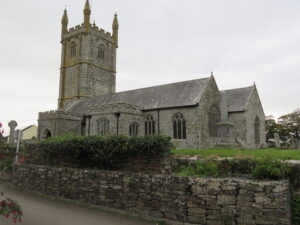
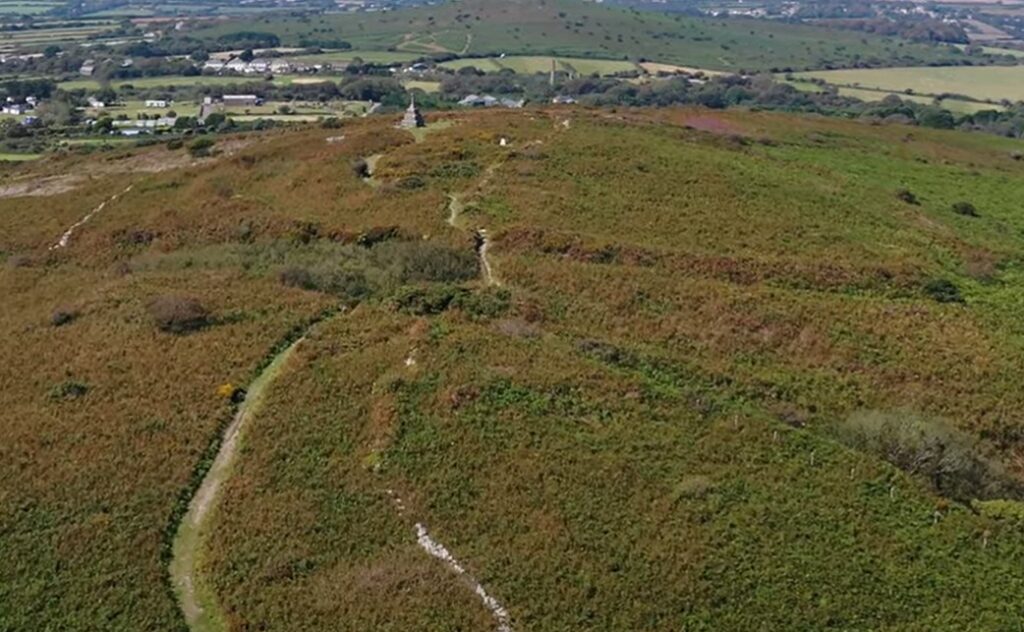
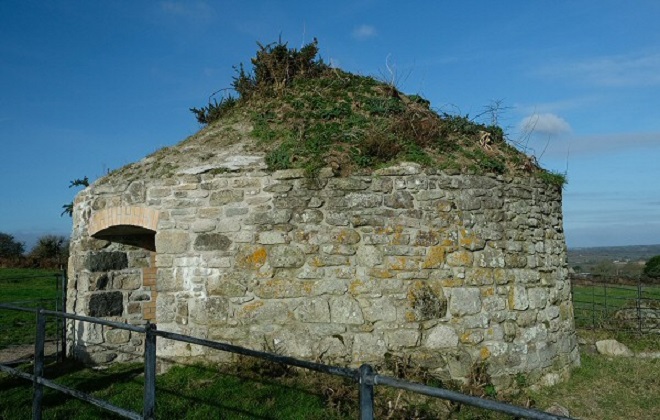
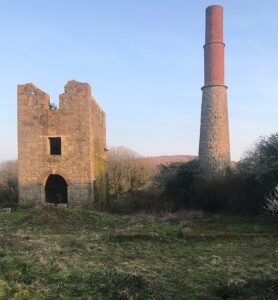
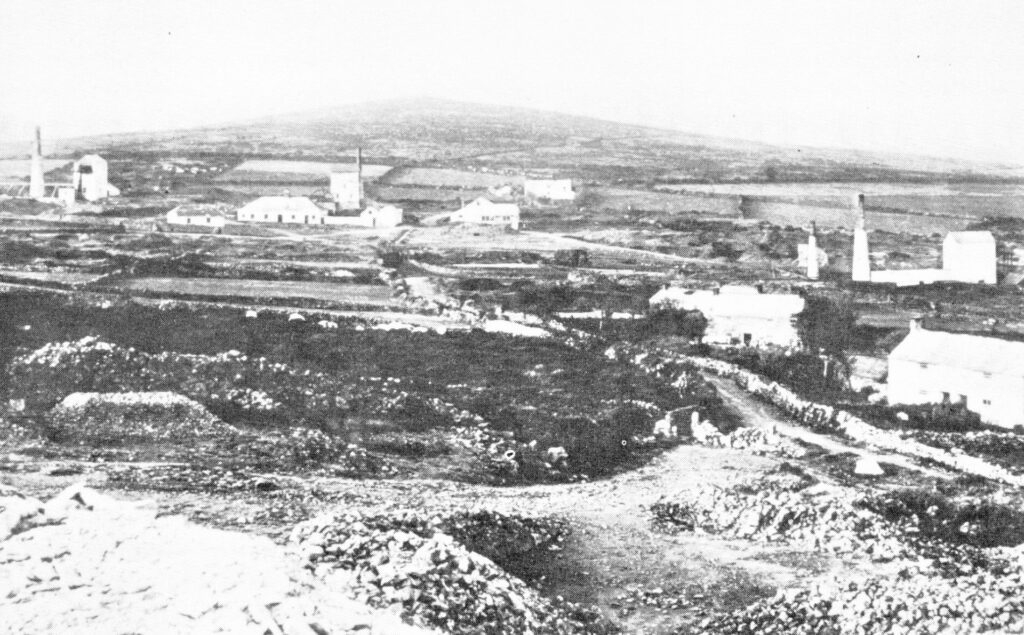
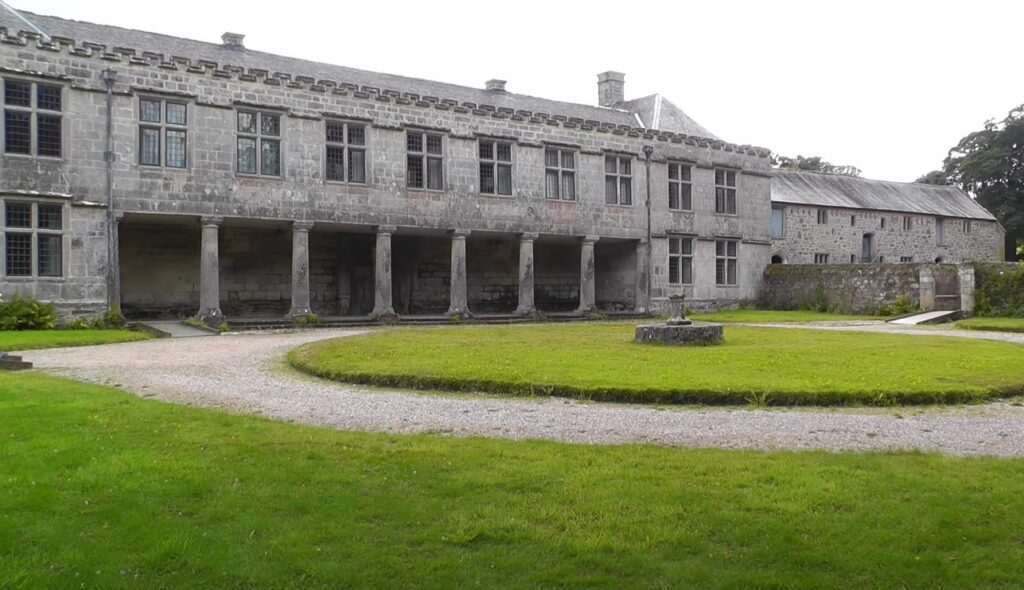
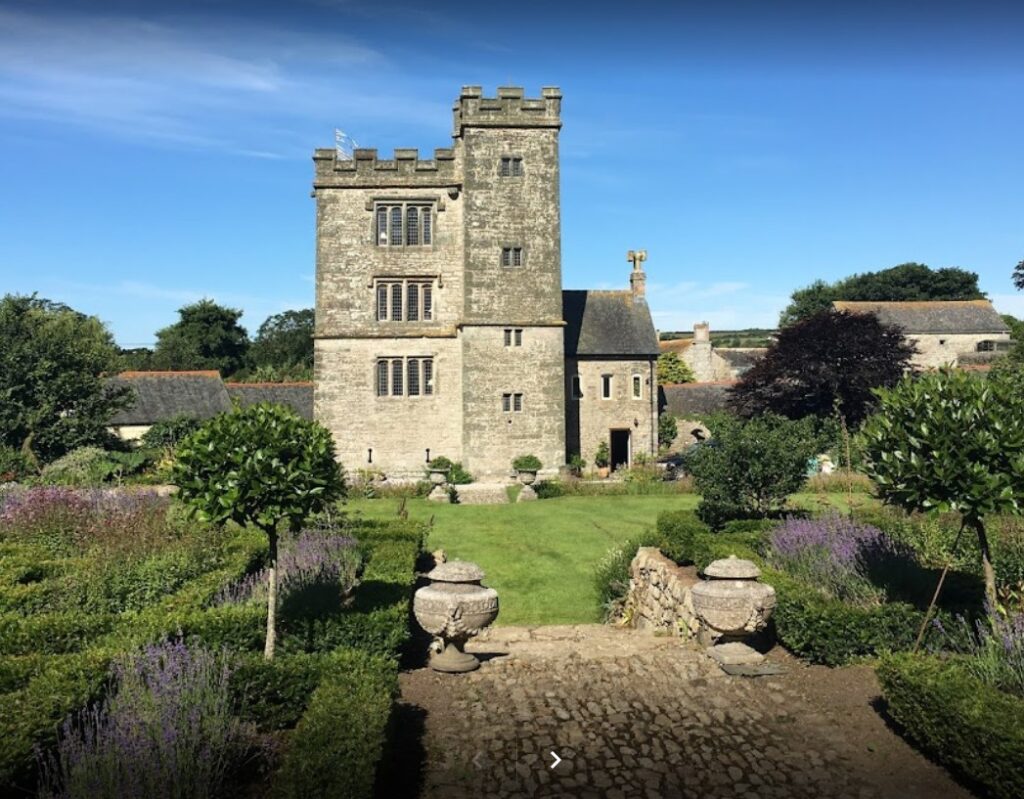
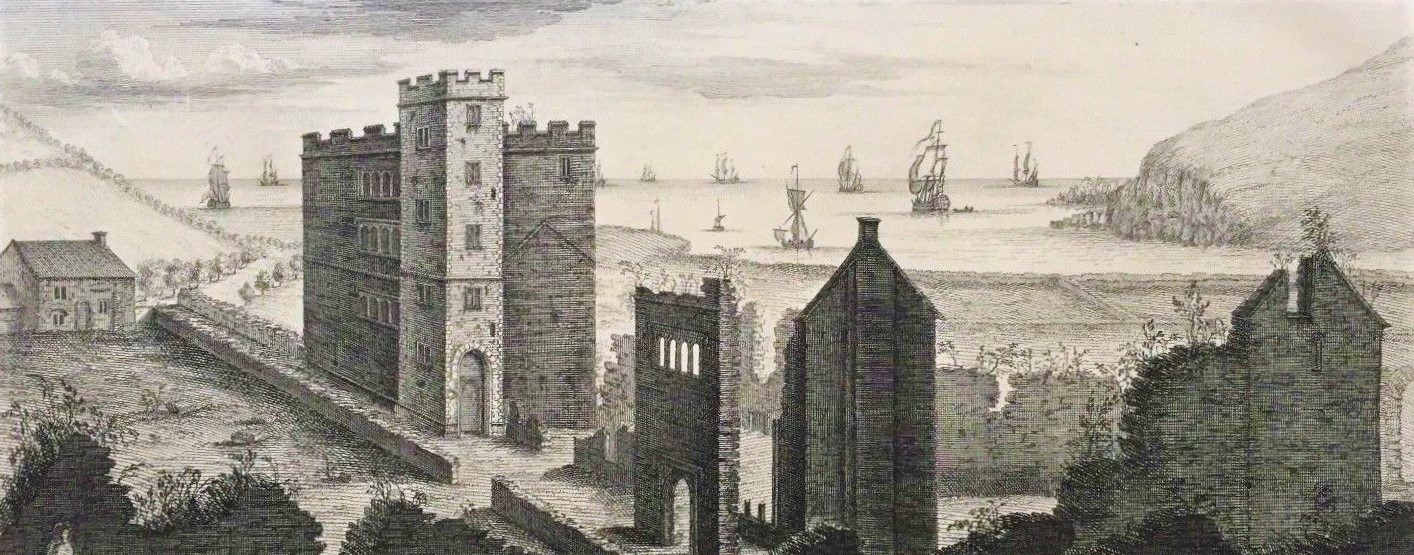
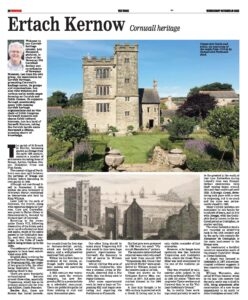
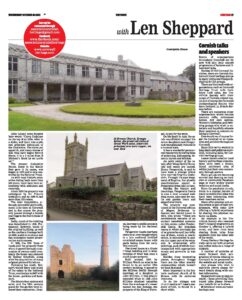
![[121] Ertach Kernow Heritage Column - 19th October 2022 - Cornish Talks & Speakers Ertach Kernow Heritage Column - 19th October 2022 - Cornish Talks & Speakers](https://www.cornwallheritage.com/wp-content/uploads/2022/10/121-Ertach-Kernow-Heritage-Column-19th-October-2022-Cornish-Talks-Speakers-286x300.jpg)